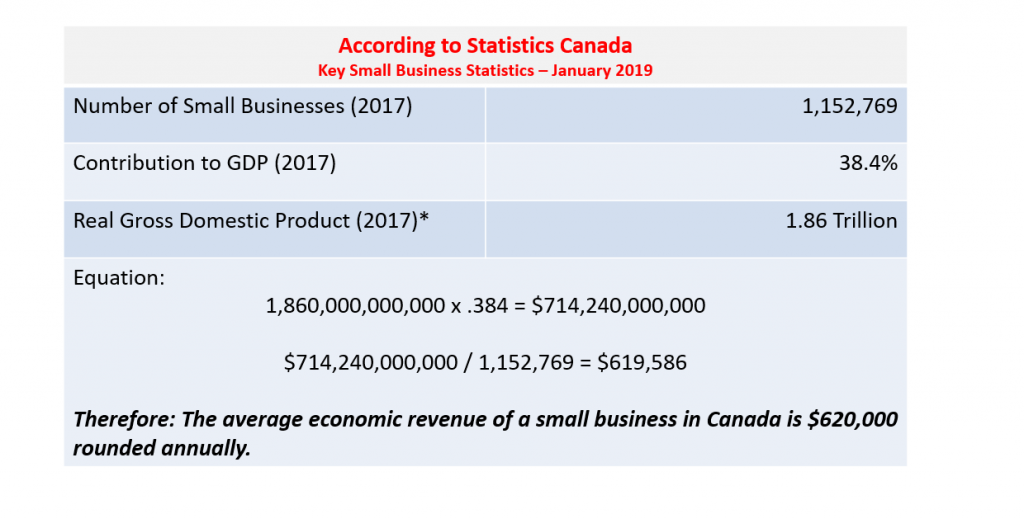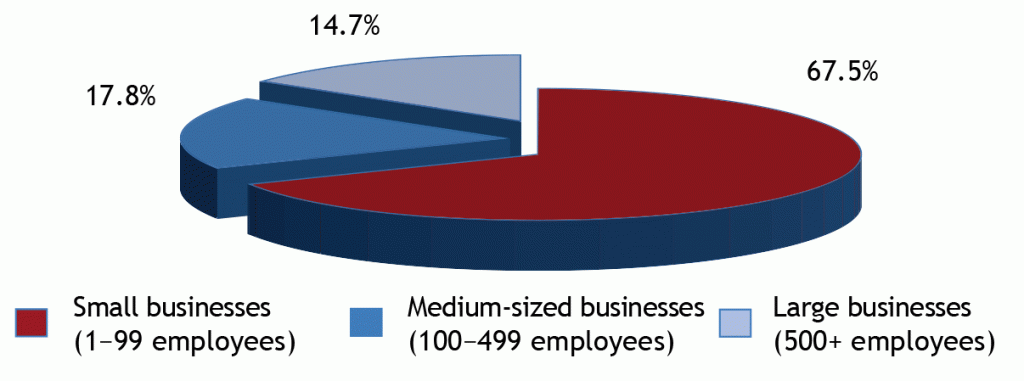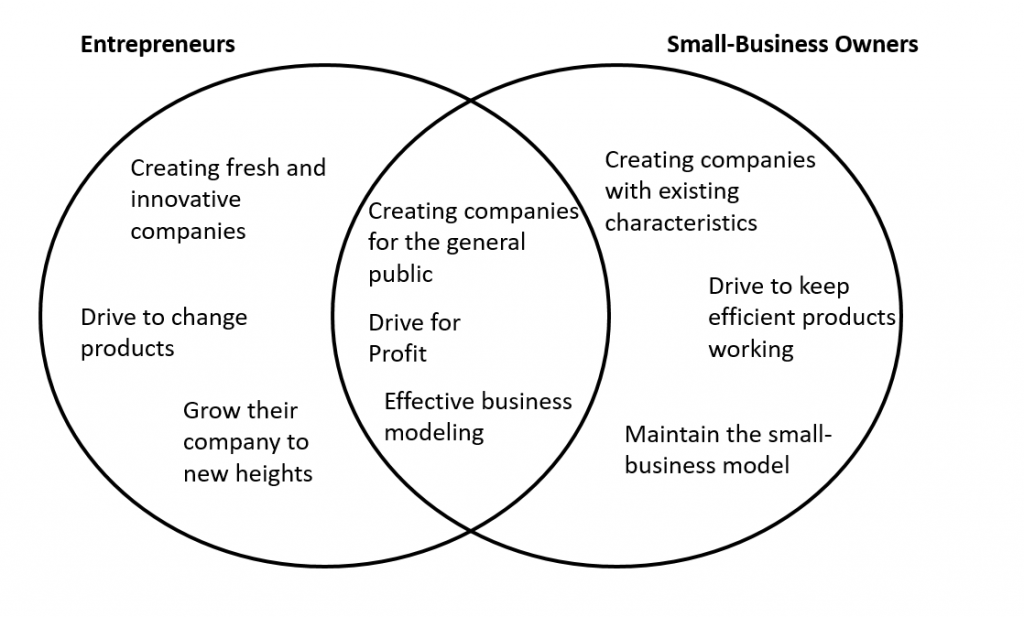4.3 Small Business and Entrepreneurship: Similarities and Differences
What characteristics does a small business have? Are they physical, such as a garage, or a table with lemonade? Perhaps it is small in economic terms, with simple book-keeping, such as selling hummels online for $5 apiece. Perhaps small is two people staying up all night with tools and wiring trying to build a machine the world will eventually not be able to live without. Regardless of how you small businesses are viewed, they carry many different characteristics.
Small businesses represent a large portion of Canadian economic output and are defined by many physical, economic, social, and geographic characteristics. Physical is the physical space (a small office building), economic is the annual revenue (see Figure 3)[5] *[6], social is the employee makeup (1-99 employees in Canada is considered a small business)[7] (see Figure 4), and geographical is location (commonly located in small towns and small markets).


One factor that is present in a variety of small businesses today is their willingness to look globally[8]. Although their geographic location keeps them grounded physically, their outlook and their business model lends itself to a world-wide approach. This relates to the learning organization in ways that leaders and managers will look for big change outside of the walls and beyond geographical limitations. Similarly to how many small companies will export their entrepreneurial products to other areas of the world, leaders in learning organizations will use the entrepreneurial attitude to export holistic knowledge internationally.
This leads to the similarities and differences between a small business owner and an entrepreneur. Along with the classical characteristics of each, this contrast will develop an understanding of its relevance inside a learning organization. To better understand these similarities and differences, see the Venn diagram in Figure 3.

The best way to look at this is to use the comparison of a book store owner and Jeff Bezos[9]. The book store owner buys and sells books for a profit, and maintains an effective model of selling physical books; whereas Bezos created a new model called web-based book-selling[9] which is an effective, fresh, and innovative way to sell books.
How this relates to the learning organization is the fact that there is a variety of different ways to lead individuals in fostering knowledge. An entrepreneurial approach would create a fresh and innovative way to change epistemological reasoning, and grow the knowledge of individuals. On the other hand, an existing epistemological concept could be used to maintain a knowledge base, which is a theoretical concept much like a small-business owner. Regardless of the design, it is important to keep a set of inherent values in keeping with the middle slice of the Venn diagram in Figure 3. The values must balance the two worlds effectively:
- Creating companies for the general public = Using wholesome knowledge for the learners
- Drive for profit = Drive for developing deep and critical thinking
- Effective business modeling = Effective learning theories to develop learners.
Learning organizations can utilize the ideas from small businesses and entrepreneurs to develop an ethical framework that would serve as a personal guide to amplify epistemological knowledge.
Review Questions:
- What are some relationships between entrepreneurs and small business owners?
- What are some similarities between entrepreneurial values and values within the learning organization?

